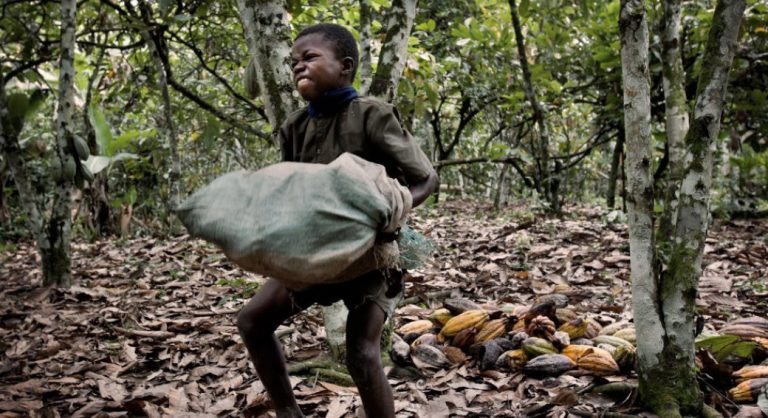
Child labour
Work performed by a minor that is prohibited by statute law, particularly under terms and conditions considered inhumane.
WordSense Dictionary
Page Description
Learn about child labour,
its causes, global impact,
and the efforts to end this violation of children’s rights.
Child labour is a complex and multifaceted issue that affects millions of children worldwide. Here are some key points about child labour:
Definition: Child labour refers to the employment of children in any form of work that deprives them of their childhood, interferes with their education, or is harmful to their physical, mental, social, or moral development. It includes work that is mentally, physically, socially, or morally dangerous and harmful to children, or work that interferes with their education, deprives them of opportunities for growth and development, and is not appropriate for their age.
Prevalence: Despite global efforts to combat child labour, it remains a widespread problem. According to estimates by the International Labour Organization (ILO), in 2020, there were about 160 million children aged 5 to 17 years engaged in child labour worldwide, with almost half of them (79 million) involved in hazardous work.
Causes: Child labour is often driven by a combination of factors, including poverty, lack of access to education, limited employment opportunities for adults, cultural and societal norms, demand for cheap labour, and inadequate legal and regulatory frameworks. In many cases, children are forced into work due to economic necessity, or they may be trafficked or coerced into labour.
Consequences: Child labour has numerous negative consequences on children’s physical, mental, and social well-being. It can result in injuries, health problems, and even fatalities due to hazardous working conditions. Child labour also denies children their right to education, which is essential for their development and future opportunities. It can perpetuate the cycle of poverty and limit their potential to break out of the cycle of poverty as adults.
Legal and Policy Framework: Many countries have laws and regulations in place to address child labour, including minimum age requirements for work, restrictions on hazardous work for children, and provisions for compulsory education. International conventions, such as the ILO’s Minimum Age Convention (No. 138) and the Worst Forms of Child Labour Convention (No. 182), provide guidelines and standards for addressing child labour at the global level.
Solutions: Addressing child labour requires a multi-faceted approach that includes measures to address the root causes, such as poverty reduction, improving access to quality education, creating decent employment opportunities for adults, and addressing social and cultural norms that perpetuate child labour. It also requires enforcement of existing laws and regulations, awareness-raising, and social mobilization. Collaboration among governments, civil society, employers, workers’ organizations, and international agencies is crucial in combating child labour effectively.
Importance of Education: Education is a key component in the fight against child labour. Access to quality education helps to prevent child labour by providing children with the opportunity to develop the skills and knowledge necessary for their future employment. Education also empowers children, raises awareness about their rights, and equips them with the tools to break the cycle of poverty.
Ethical Consumption: Consumers can play a role in combating child labour by making informed choices and supporting products and services that are produced without child labour. This includes purchasing from companies that have ethical supply chains and engaging in responsible consumption practices.
Human Rights Perspective: Child labour is a violation of the rights of the child, as recognized by the United Nations Convention on the Rights of the Child (UNCRC). It is important to approach the issue of child labour from a human rights perspective, ensuring that children’s rights, including the right to education, health, and protection from exploitation, are respected and upheld.
In summary, child labour is a complex issue with serious consequences for the well-being and rights of children. Addressing child labour requires a multi-faceted approach that includes addressing the root causes, enforcing existing laws, promoting education.
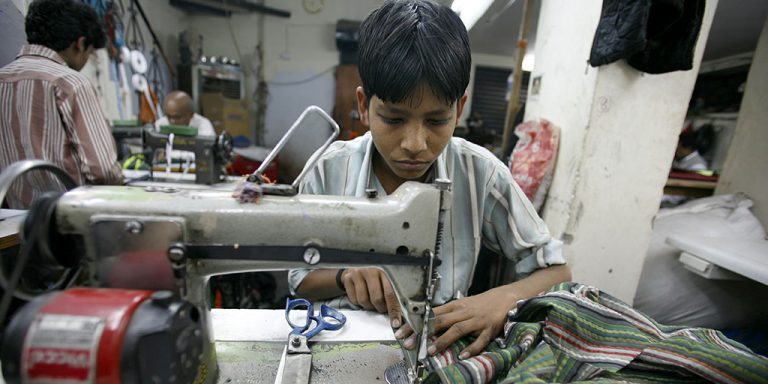
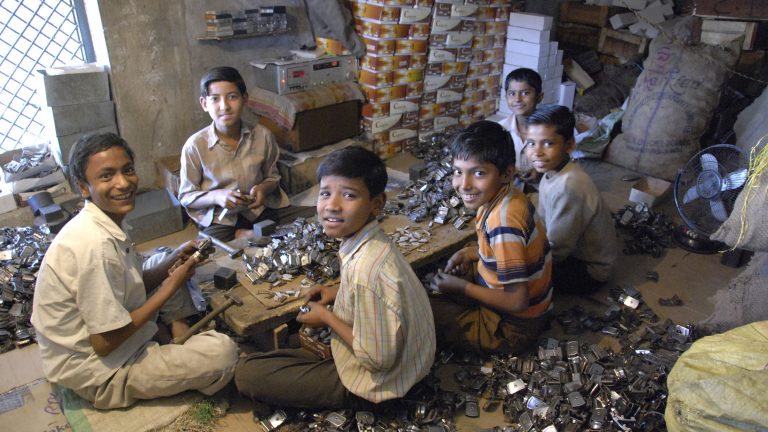
.
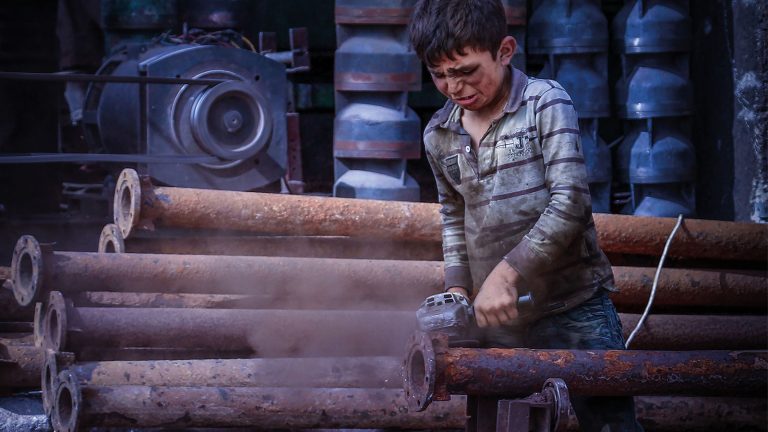
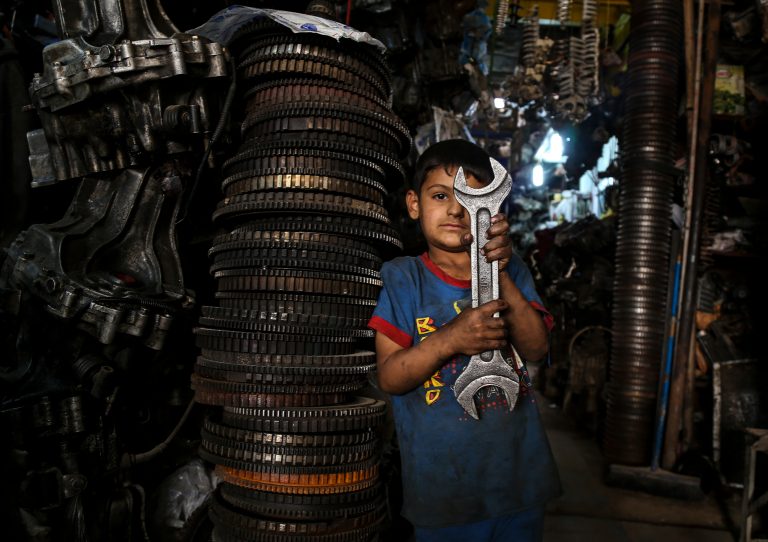
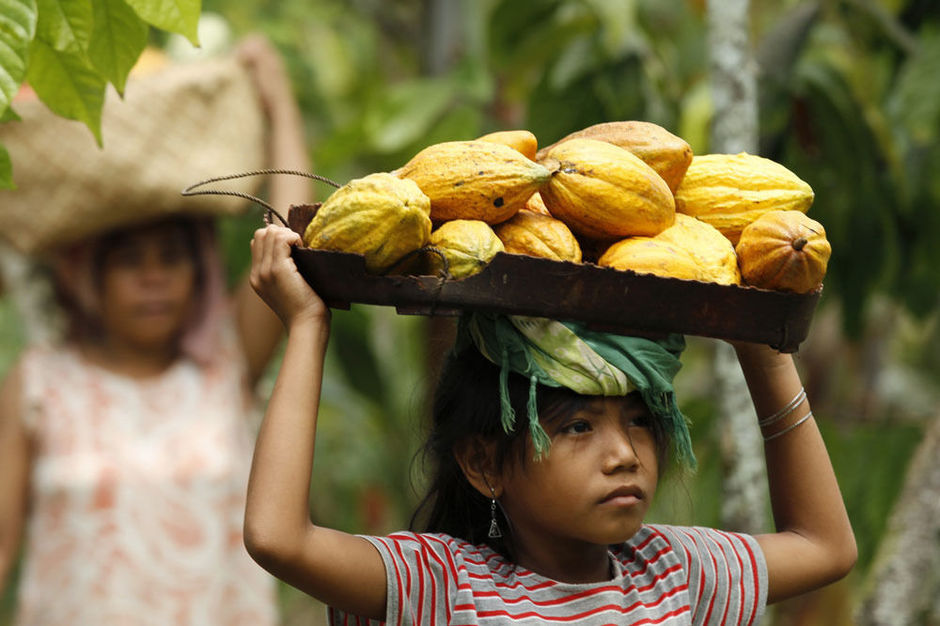
1 The Children Risking Their Lives Mining Gold
It’s called Dirty Gold, because it’s not just shoppers who are paying a high price for it.
Dateline gets rare access to film the children forced underground and even underwater to mine the precious metal. Dateline reporters scour the globe to bring you a world of daring stories. Our reputation is for fearless and provocative reporting. Australia’s beloved, award winning and longest running international current affairs program.

30 mei 2019
In the Philippines, an illegal gold trade is booming.
But not everyone is reaping large profits.
Investors desperate to cash in on a market worth hundreds of millions of dollars a year are enticing poor villagers to risk their lives by diving deep below the surface of muddy mangroves in search of gold.
The nuggets they find may eventually fetch a high price, but miners often receive a pittance and there is little safeguard to protect them.
“We put our lives at risk for this job,” says Jerry, a miner in Paracale, known as Gold Town.
While financiers make huge profits, those at the bottom of the chain suffer health problems like mercury poisoning and tuberculosis.
Jerry has been working in illegal gold mines for the past 20 years, but hasn’t been able to work for the past three months.
“I feel pain and congestion in my chest, on my back and with my breathing. Most of the time, I feel frail and weak. Sometimes, I can barely walk,” he says.
101 East joins him as he visits a doctor, who diagnoses him with pulmonary tuberculosis. The doctor believes Jerry’s job, diving for gold, is to blame.
Even so, Jerry says his gold diving days may not yet be over.
“I need to work to support my children. I just have to accept the hardship and what can possibly happen to me in the mining sites,” he says.
101 East investigates why people are dying for gold.
2 The Road to 2016: Towards the End of Child Labour
7 mei 2010
3 Ending Child Labour by 2016: the Continuing Challenge
12 jun. 2012
4 The debate on child farm labor
5 The Kids Who Pick Our Coffee
3 nov. 2015
IMPORTANT CONTENT
6 Child Labour Ruins Childhood
24 sep. 2013
7 Children still mining cobalt for gadget batteries in Congo
5 mrt. 2018
8 Fighting child slavery with innovation | Nina Smith | TEDxDhaka
9 feb. 2015
9 The high cost of cheap clothing | Trisha Striker | TEDxTownsville
3 nov. 2016
10 Change Your Role in Forced and Child Labor | P.J. Tobia | TEDxNashville
16 aug. 2016
IMPORTANT CONTENT
11 Modern-day slavery in supply chains | Dan Viederman | TEDxBerkeley
26 mrt. 2015
12 Slavery still exists. Here’s how to end it. | Richard Lee | TEDxCapeMay
9 jan. 2018
13 Hidden in plain sight – slavery in your Community: Dr. Kate Transchel at TEDxChico
4 dec. 2013
29 nov. 2018
15 Protecting children is everybody’s business | Bob Lonne | TEDxQUT
15 okt. 2015
16 Child Labor Robs Children of Their Future
7 jan 2022
Education is the first casualty of war. In Yemen, the number of out-of-school children has doubled since armed conflict escalated in 2015, leaving more than 2 million school-age children out of the classroom, jeopardizing their futures.
In the city of Taizz, in Yemen’s southwest, 12-year-old Anas’s childhood effectively ended the day his father died. That’s when he became his family’s sole breadwinner. Working from 7 a.m. to 6 p.m. in an iron workshop leaves little time for studying, so Anas was forced to drop out of school. But he is determined that his brothers continue their educations.
“I stopped studying because there is no one to support my family,” he says. “I made my four brothers study … so that they graduate from universities and get jobs.”
UNICEF is on the ground in Yemen, working with partners to protect children like Anas and his brothers, so they have the opportunity to reach their full potential. In 2021, UNICEF reached 50,000 households with multipurpose humanitarian cash transfers, helped 500,000 children access formal or nonformal education and provided 800,000 children with individual learning materials. .
“Access to quality education is a basic right for every child, including for girls, displaced children and those with disabilities,” said Philippe Duamelle, UNICEF Representative to Yemen. “The conflict has a staggering impact on every aspect of children’s lives, yet access to education provides a sense of normalcy for children in even the most desperate contexts and protects them from multiple forms of exploitation. Keeping children in school is critical for their own future and the future of Yemen.”
17 jan. 2017
17 Children Must Live With Families | John VanDenBerg | TEDxPaonia
13 apr. 2016
18 Emancipation from Mental Slavery | Dr. Cheryl Tawede Grills | TEDxCulverCity
27 jul. 2015
19 Slavery in the Coffee Industry
20 Education Counts : Award-winning short film based on Child Labour
14 mrt. 2013
* Winner – 2nd prize (Commissioned Category) at ANIFEST2013
* Official Selection: 6th Lahore Int’l Children’s Film Festival, 2014.
* Official Selection: 18th International Children’s Film Festival India (ICFFI) 2013
21 Child Labor Philippines
25 apr. 2011
22 Your Cell Phone Might Be Powered By Child Labor
23 Hidden slaves: children like Tania (9) from Bangladesh
11 jun. 2013
24 The Hidden Lives Of ‘Housegirls’ – Full documentary – BBC Africa Eye
20 mei 2019
IMPORTANT CONTENT
25 Colombie : les enfants taupes
8 apr. 2018
26 Le travail infantile en Bolivie
28 dec. 2014
27 Le travail des enfants en photos
20 okt. 2014
28 Philippines : Dangereux travail d’enfants dans des mines
30 sep. 2015
IMPORTANT CONTENT
29 The Fight to End Child Labor
30 Envoyé spécial. Enfants syriens : génération sacrifiée – 3 novembre 2016 (France 2)
27 apr. 2017
31 Les enfants de la misère [Turbulences-Prod]
22 jun. 2017
32 Voici la vie de Bushara…
7 jul. 2015
IMPORTANT CONTENT
33 Il doit faire travailler ses enfants dans une carrière de pierre | UNICEF France
12 jun. 2013
UNICEF France
37,5K abonnees
A Madagascar, dans la carrière de Belobaka, plus de 180 enfants sont soumis à ce qui est reconnu comme l’une des “pires formes de travail” : casser des pierres à longueur de journées. Un papa nous explique qu’il n’a pas d’autre alternative pour faire vivre sa famille et qu’il préfèrerait envoyer ses enfants à l’école. Une spécialiste de l’UNICEF nous détaille le problème et les solutions apportées par l’UNICEF.
Pour soutenir nos actions : http://www.unicef.fr/contenu/info-hum…
Abonnez-vous à notre chaîne pour plus de vidéos : http://bit.ly/AbonnementUNICEF
➽ Qui sommes-nous ?
Depuis plus de 70 ans ans, UNICEF est le principal défenseur de la cause des enfants. En menant des actions dans 190 pays et territoires à travers le monde, nous aidons les jeunes à survivre, à s’épanouir, de leur plus jeune âge jusqu’à la fin de l’adolescence. De la santé à l’éducation en passant par l’inclusion sociale et l’accès à l’eau, nous nous battons au quotidien pour répondre aux besoins essentiels des enfants.
➽ Retrouvez sur notre chaîne des témoignages et des histoires poignantes sur la dure réalité à laquelle sont confrontés certains enfants. Vous y trouverez aussi des réponses à vos questions sur le développement et l’éducation de vos enfants.
➽ Soutenez nos actions : https://www.unicef.fr/don-unicef
34 Elle vivait dans une décharge avant de trouver le refuge d’UNICEF | UNICEF France
3 jun. 2013
Saïma, 7 ans, vit dans l’un des pires bidonvilles de Dacca, au Bangladesh. Pour survivre elle devait parcourir les décharges pour ramasser des chiffons, jusqu’à ce qu’elle entende parler d’un endroit accueillant les enfants en danger, soutenu par l’UNICEF…
Soutenez des enfants comme Saïma en faisant un don chaque mois ! https://www.unicef.fr/dossier/don-men…
Abonnez-vous à notre chaîne pour plus de vidéos : http://bit.ly/AbonnementUNICEF
➽ Qui sommes-nous ?
Depuis plus de 70 ans ans, UNICEF est le principal défenseur de la cause des enfants. En menant des actions dans 190 pays et territoires à travers le monde, nous aidons les jeunes à survivre, à s’épanouir, de leur plus jeune âge jusqu’à la fin de l’adolescence. De la santé à l’éducation en passant par l’inclusion sociale et l’accès à l’eau, nous nous battons au quotidien pour répondre aux besoins essentiels des enfants.
➽ Retrouvez sur notre chaîne des témoignages et des histoires poignantes sur la dure réalité à laquelle sont confrontés certains enfants. Vous y trouverez aussi des réponses à vos questions sur le développement et l’éducation de vos enfants.
➽ Soutenez nos actions : https://www.unicef.fr/don-unicef
35 Inde : des enfants exploités dans les mines de mica
3 mrt. 2016
36 – 168 millions d’enfants au travail dans le monde
12 jun. 2015
The Dark Secret Behind Your Shiny Makeup | Undercover Asia | CNA Documentary
Back to menu IMPORTANT CONTENT
1 mei 2021
37 Slavery Still Exists & Our Purchases Are Why
24 nov. 2018
38 Les Petits Débrouillards du Maroc
2 okt. 2018
Inde: des enfants dans les mines pour des produits de beauté
39 Le travail des Enfants
40 Kids Of The Corn Farm (HBO)
31 aug. 2017
41 “I wanted to die”: The ‘hell’ of kafala jobs in the Middle East – BBC Africa Eye
24 okt. 2018
42 A Life of Labour: Pharady’s Story | World Vision
12 aug. 2010
PAINFUL TO WATCH AND LISTEN TO
43 UNICEF: Conflict in Syria forces children into child labour
12 aug. 2020
45 
21 feb. 2014
India: The Lost Boys
Karma,16, has worked as a miner for over a year in India’s northeastern state of Meghalaya, crawling deep inside a ‘rat-hole’ tunnel to dig coal for seven hours a day.
“Inside it is very unstable. The smell is awful,” he said sitting on a pile of coal. “It is so dirty, and it is difficult to move. You breathe in the coal and the dust. People get sick like this. There is no water to drink and it is so muddy. It is not nice at all.”
Child rights activists have reported that there are thousands of children like Karma working in Meghalaya’s coal pits, because only those who are small in size are able fit in the claustrophobic tunnels. Many of them, like Karma, are believed to be from neighbouring Indian states, or from nearby Nepal and Bangladesh.
Hasina Kharbhih has been fighting the exploitation of these children for several years through her NGO Impulse. She said agents working for mine owners help traffic children to the coal-rich Jaintia Hills district of Meghalaya.
They promise impoverished parents high salaries in return for their children’s work, but fail to mention the dangerous conditions they will be living in. The mines often flood without warning or cave in, trapping and killing workers. There is rarely any compensation for the victims.
“If we die, we die,” said Ram Kumar Rai, 40, a Nepalese miner in Jaintia Hills.
“They just bury us here. If we live, we suffer and we can’t earn. We rot here and die. People who have money, friends or family here, their body will be sent back to Nepal. And those who don’t have anyone, they will just throw their bodies here or there.”
Rai was recently trapped in a tunnel after a massive rock fell on him. He had severe pain in his back and chest but received no compensation or money for medical treatment from the mine owner.
“When someone dies, they hide the body so no one will know. That way the owner does not pay compensation to the family. He doesn’t pay a single cent,” he said.
There are several national laws in India that set labour and safety standards for mines, and ban children aged under 18 from working there. But the industry in Meghalaya is openly flouting these regulations because the state government has failed to implement these laws and punish offenders.
Karma has been labouring here since he was 14. His family of seven moved to Jaintia Hills a few years ago from Assam, desperately searching for work. His father had just died of tuberculosis after spending a lifetime in Meghalaya’s mines.
“I would like to have the chance to study but then my brother would be the only one working and we cannot afford it. And if I try to do another job, the salary would be less. So do we eat or do I go to school?” Karma said.
Karma works most days, using a pick-axe to remove coal from the walls of the tunnels. “When I first went in the rat-hole, I was so scared,” he said. “I thought the roof would fall on me. My knees were all scratched, but after two weeks I got used to it.”
“There are boys who are nine to 10 years of age who are doing this work. Younger than that they cannot do it.”
Despite several reports by the media and child advocates, Ampareen Lyngdoh, Meghalaya’s labour minister, said she had yet to see hard evidence of young labourers.
“The mining owners were telling me that a child actually cannot pull out the coal from the mine,” she said from her office in the state’s capital, Shillong.
“You need to verify the ages of these so-called children. We are a community which is very small built. If you looked at my face you would not know how old I am. I can challenge you on that. So I might look sweet 16 but my age is something else.
“Every time we rescue these so-called children, they come to a medical officer and they manage to get a certificate which says they are above such and such age.”
Despite her reservations, Lyngdoh said the government is drafting the state’s first ever mining policy so they can register all mine owners and set standards for what they can and cannot do. Child labour is banned under these guidelines but ‘rat-hole’ mining is not, which is why children are employed in the first place.
Child rights activist Hasina Kharbhih is sceptical about the state government’s sincerity in tackling child labour.
“The political will has not been there because half of the mines are also owned by a lot of political leaders. So definitely there is a vested interest of the political leaders to actually ensure that you slow down the whole process of whatever complaint is coming,” she said.
“These people have no rights at all. A democratic country like India will not be developing and prospering through violation of rights. It is inhumane.”
46 India: Child workers of Meghalaya
11 mei 2010
IMPORTANT CONTENT
The children who work in India’s rat-hole coal mines
IMPORTANT CONTENT
47 India’s Children Coal Miners
16 apr. 2014
IMPORTANT CONTENT
48 Special Report – Curse of the Black Gold
8 feb. 2016
49 Rat-hole coal mining in Jaintia Hills, Meghalaya
26 jan. 2013
50 Indian coal mining in meghalaya | fully manual processing mining
52 Colombia : the mole children (full documentary)
19 feb. 2018
IMPORTANT CONTENT
53 Child Coal Laborer in East Jaintia Hills District Meghalaya
16 jun. 2013
54 Rat hole mining- News Night
18 jan. 2009
56 Children Coffee Labor in Sumatra: Children’s Sweat in Your Cups of Coffee
28 jun. 2011
7 dec. 2020
58 Where Children Must Work – Tropic Of Cancer – Episode 5 Preview – BBC Two
15 apr. 2010
More about this episode:
http://www.bbc.co.uk/programmes/b00s5wzp
Simon Reeve meets 10-year-old Jahangir, who works in a sweltering glass factory in Dhaka, Bangladesh, for less than 50p a day. There are more than three million child labourers in Bangladesh, and because more than 80 per cent of Bangladeshis live on around £1 a day, families would go hungry without the money children earn.
Charities and NGOs in Bangladesh now realise they cannot always prevent children from working. But Simon visits one of thousands of centres opened by UNICEF for child labourers to attend before and after their work shifts, so they can secure an education, friendship and a future.
Simon’s epic trip around the Tropic of Cancer takes him through 18 countries on the northern edge of Earths tropical zone. Starting in Mexico he travels east through the glorious Caribbean, to a stunning desert oasis in North Africa, across India and Asia, and on a dangerous, covert incursion into the remote hills of western Burma.
#bbc
All our TV channels and S4C are available to watch live through BBC iPlayer, although some programmes may not be available to stream online due to rights. If you would like to read more on what types of programmes are available to watch live, check the ‘Are all programmes that are broadcast available on BBC iPlayer?’ FAQ 
IMPORTANT CONTENT
59 The White Lie – A Child Labour Documentary
25 mrt. 2017
60 U.S. Child Labor History: A Documentary Lecture on Child Workers During the Progressive Era
19 dec. 2017
IMPORTANT CONTENT
61 The Fight Against Child Labour
23 sep. 2018
62 Documentary on Child Labour
63 Indian women & children making bricks by hand
64 The thousands of children working in India’s mines
3 mrt. 2016
65 Agnus Dei – Les enfants des rues au Brésil
66 Kids Kidnap Grandma Prank
5 mei 2011